Yucca plants are amazing because they look great and don’t need much attention. They remind you of dry places like the South of America and the Caribbean. Having them in your home or garden gives a special, exotic feeling. In this detailed guide, we’ll learn all about Yucca plants. We’ll tell you about different kinds and give you tips to take good care of them so they stay healthy and happy.
Check out Attracting Bats to Your Bat House: FAQs Answered Click here...
Types of Yucca Plants
Yucca plants come in over 40 different varieties, offering a wide range of options. Some are compact like shrubs, while others can grow quite tall, resembling trees. You can select a Yucca plant that suits your space and matches your preferences. Let’s explore a few popular Yucca plant types:
1. Spineless Yucca

The Spineless Yucca, sometimes called the “Giant Yucca,” can grow really tall, up to 30 feet. But most people keep it as a small potted plant. It’s great for indoors because its leaves don’t have sharp edges. In the summer, it even gives us beautiful white flowers that turn into fruits later on.
2. Hesperaloe parviflora

The Red Yucca or Hesperaloe parviflora comes from Central America, and it’s known for its bright colors and interesting textures. People love to have it in their outdoor gardens because it’s so captivating. It has pinkish flowers that grow in clusters on tall, slim stems, which look really striking. This plant can handle dry conditions and stays green all year, and it even blooms no matter the season, so it’s great for gardens that get lots of sunlight.
3. Yucca aloifolia

Yucca aloifolia is the main species that represents the Yucca genus. It’s known by names like aloe yucca, dagger plant, and Spanish bayonet. This plant prefers sandy soils, and you can often find it on sand dunes along the coast.
4. Adam’s Needle
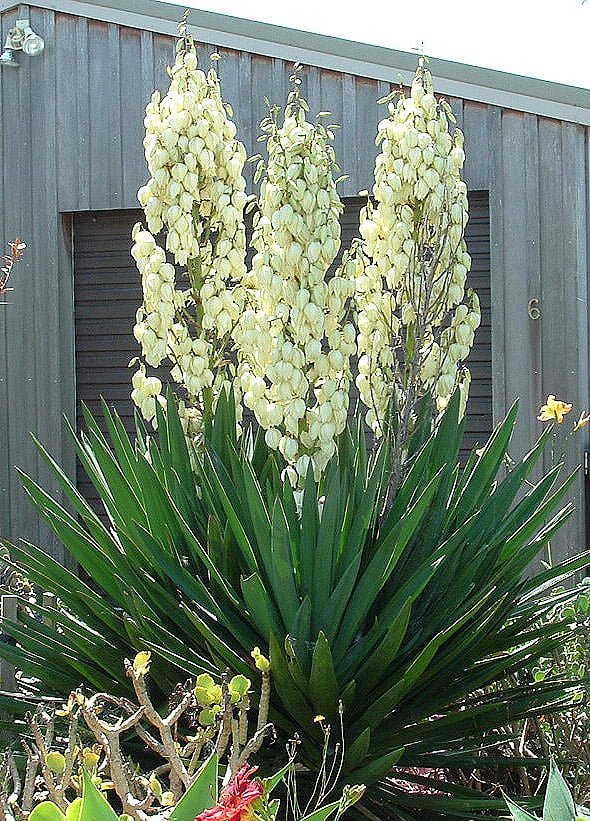
The Adam’s Needle Yucca comes from the Southeastern USA. It’s been useful for Native Americans, not just for making their landscapes look good, but also for important things. This plant has leaves with sharp points that can be as tall as 4 feet. In the spring, it gives us white flowers that look like lanterns.
5. Joshua Tree

The Joshua Tree is the biggest of all Yucca plants, and it got its name from Mormon pioneers because it looks like a tree. It usually grows in the Mojave Desert, but you can also grow it at home if you give it soil that drains well and is sandy, and if you have a warm climate. It’s pretty amazing because Joshua Trees can get as tall as 40 feet and can live for up to 150 years.
6. Dasylirion wheeleri

Dasylirion wheeleri is a flowering plant in the asparagus family. It’s originally from dry areas in northern Mexico and the southwestern United States.
7. Yucca treculeana

Yucca treculiana Carrière is a flowering plant in the Asparagaceae family and is found in Texas, New Mexico, and Coahuila. It goes by several common names like Spanish dagger, Spanish bayonet, and Don Quixote’s lance. Yucca treculiana is a big plant, almost like a tree, and can grow as tall as 10 meters, often with branches appearing above the ground.
8. Soapweed Yucca Plant
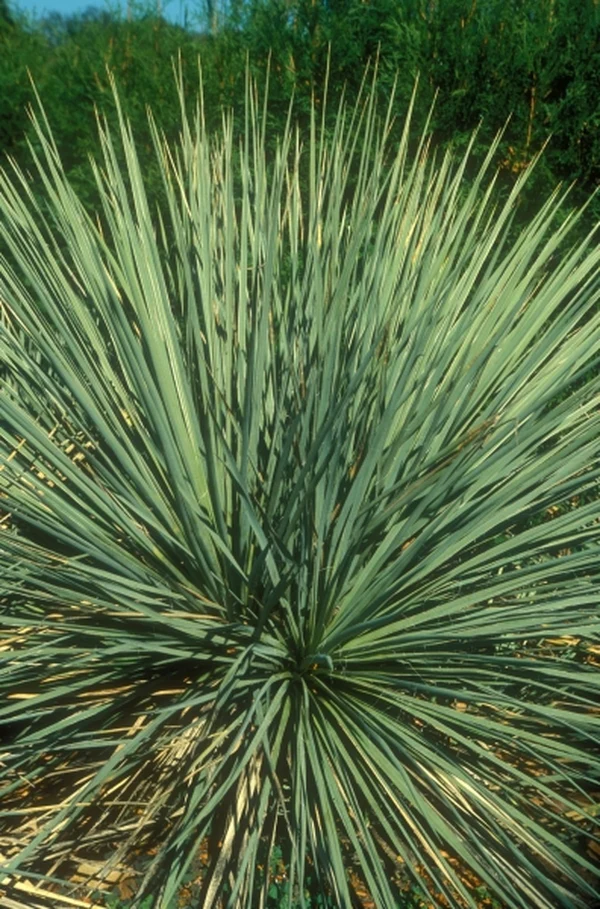
Yucca glauca
The Yucca glauca, which is its scientific name, does really well in the desert grasslands of central North America. It has blue-green leaves that grow in a rosette shape, and it gives off a nice smell with its green and white flowers. This plant is great for your landscape because it looks good all year round.
9. Spanish Dagger

The Spanish Dagger is from the southeastern US. People like to use it as a decorative plant because it has leaves that look like swords. It grows in a way that stands out, and it has special flowers, so it’s a common choice for landscaping.
10. Beaked Yucca Plant (Yucca rostrata)

The Beaked Yucca, also called the Big Bend Yucca, has just one trunk and leaves that are sharp and pale blue, like pom-poms. It gives your garden a silvery look because it has soft, thin gray fibers hanging from its old leaves. When it’s in bloom, it has yellow-orange flowers.
Check out 35 Types of Snake Plants to Beautify Your Indoor Garden Click here...
11. Yucca queretaroensis
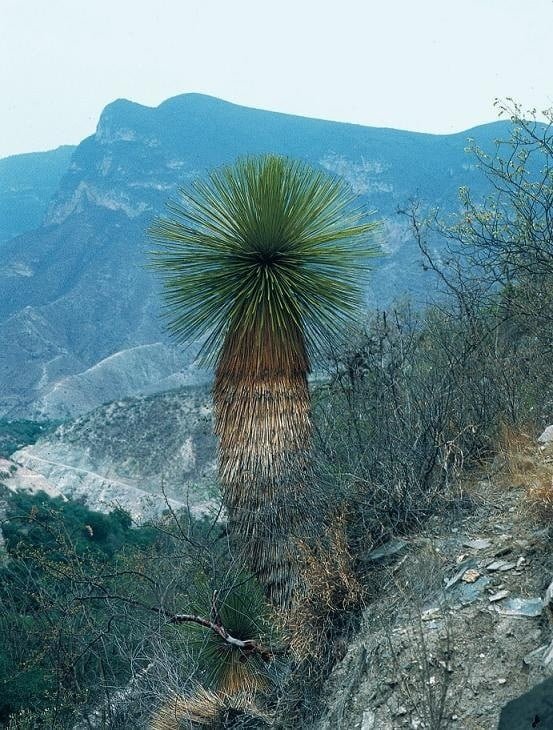
Yucca queretaroensis is a plant in the Yucca genus, part of the Asparagaceae family. It’s found in the Sierra Madre Occidental region in Mexico, specifically in the states of Hidalgo, Guanajuato, and Querétaro. This plant is not well-documented, mostly due to the challenging and rugged terrain where it grows.
12. Banana Yucca Plant (Yucca baccata)
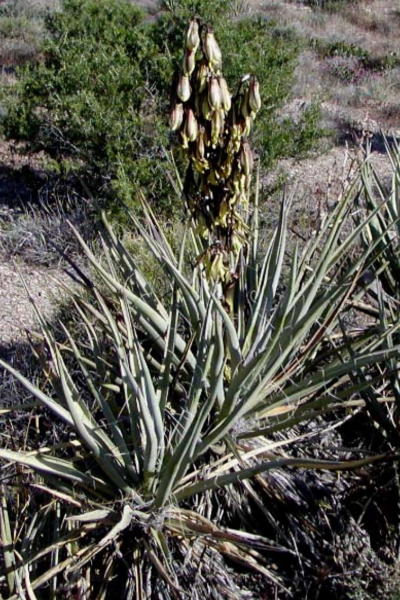
The Banana Yucca is special because it makes fruits that you can eat, and they look like bananas. Navajo and Apache Indians have been eating them for a long time. This plant has leaves with sharp points and flowers that bloom in the spring, so it’s a nice thing to have in your garden.
13. Mojave Yucca

The Mojave Yucca is one of the bigger types of Yucca plants. It looks like a tree and has a special cane trunk. You can find it in the Mojave Desert, and it can grow up to 16 feet tall. Its roots are known for having healing properties that can help with things like boosting your immune system, keeping your skin healthy, and relieving arthritis pain.
14. Yucca × schottii

Yucca × schottii is a plant in the Yucca genus and is originally from southern Arizona, southwestern New Mexico, and the northern areas of Sonora and Chihuahua. It’s known by various names, including Schott’s yucca, hoary yucca, and mountain yucca.
15. Yucca angustissima
Yucca angustissima, also called the narrowleaf yucca, is part of the Agavaceae family. It’s often referred to as the “narrow-leaved yucca.” This plant is originally from Arizona, New Mexico, Colorado, and Utah but is also grown in other places for its decorative qualities. Yucca angustissima is a low-lying species that creates groups of rosettes near the base, and these can get as wide as 3 meters.
16. Soaptree Yucca
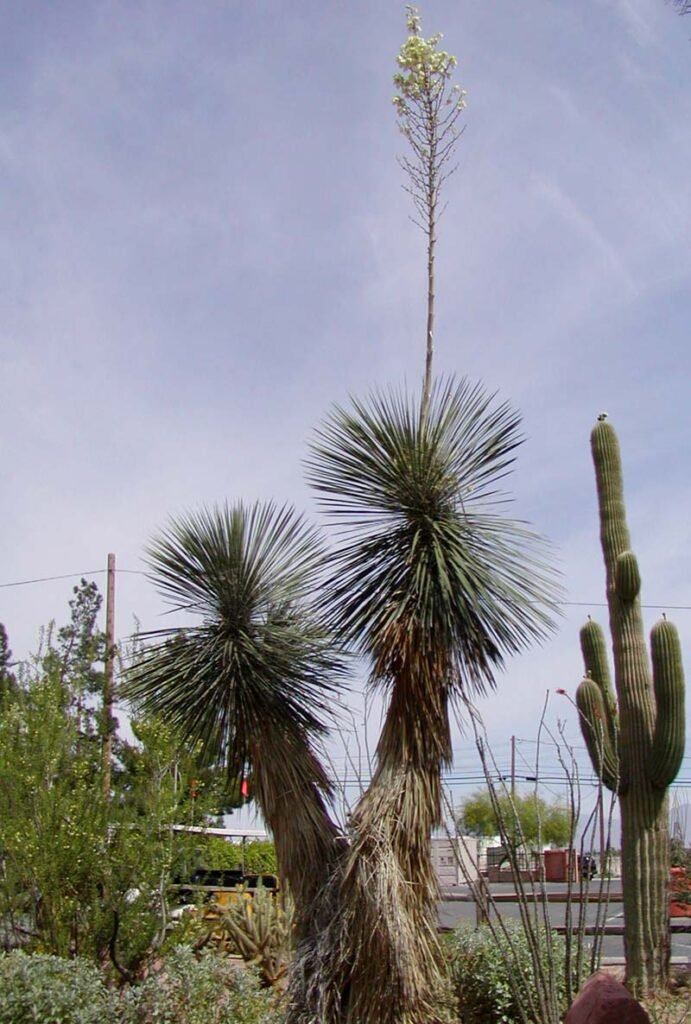
The Soaptree Yucca originally comes from the Chihuahuan Desert, but now you can find it in gardens all around the world. It has leaves that look like palm leaves, white flowers, and it grows really tall, which makes it a great plant for decoration.
17. Thompson’s Yucca Plant (Yucca thompsoniana)

Thompson’s Yucca is sometimes mixed up with the Beaked Yucca, but it’s smaller and only grows up to 6 feet tall. It looks nice and isn’t too big, so it’s a good choice for both indoor and outdoor spaces.
18. Our Lord’s Candle
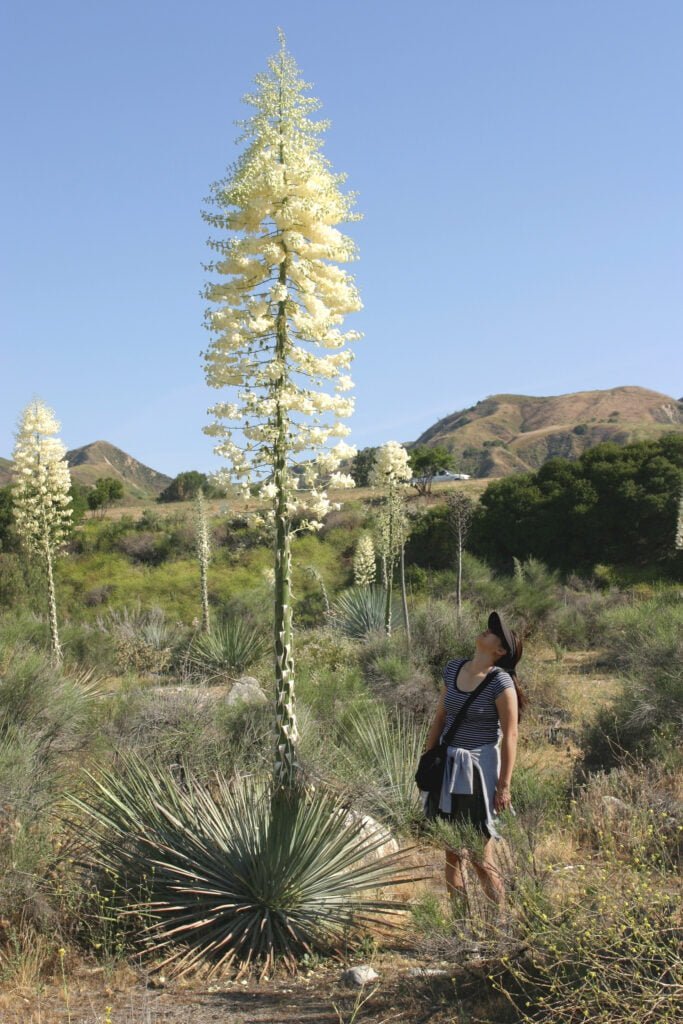
Lord’s Candle, also known as the Yucca plant, is an easy-to-care-for succulent that can make your indoor or outdoor space look great. It’s tough and doesn’t need much attention. This plant is not just pretty; it can also clean the air in your home. So, if you’re looking for a low-maintenance and attractive addition to your garden or home, the Yucca, or Our Lord’s Candle, is a great choice.
19. Yucca pallida

Yucca pallida, also known as pale yucca, is a type of yucca that comes from Northern Mexico and certain areas in northern and central Texas. What’s special about it is its light-colored leaves, which can be pale blue-gray or a sage-green color.
20. Yucca gloriosa var. tristis

Yucca gloriosa var. tristis, also called the curve-leaf yucca, curved-leaved Spanish-dagger, or pendulous yucca, is a type of Yucca gloriosa. People like to grow it as a decorative plant. It’s found in the southeastern United States, starting from coastal southeastern Virginia, going down through Florida, and over to Texas.
Check out Rio Dipladenia Care: A Comprehensive Guide Click here...
21. Yucca filifera
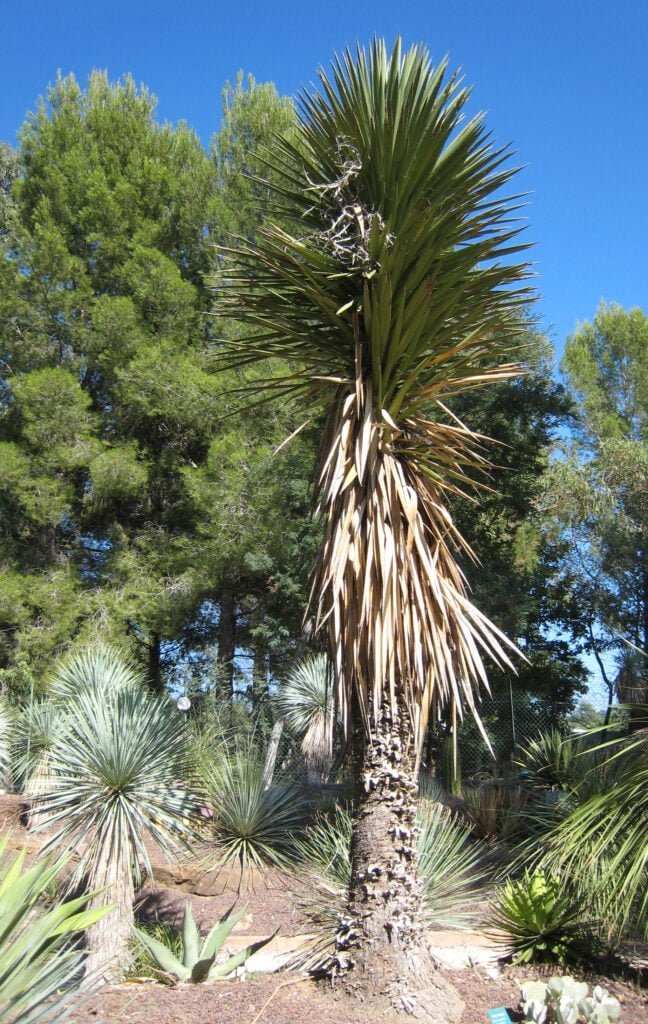
Yucca filifera, belonging to the Agavaceae subfamily within the Asparagaceae family, hails from the heart of Mexico. This sturdy succulent, known for its distinctive long, thread-like leaves, adds a touch of Mexican charm to gardens around the world. Its resilience and unique appearance make it a popular choice for both novice and experienced gardeners.
22. Yucca constricta
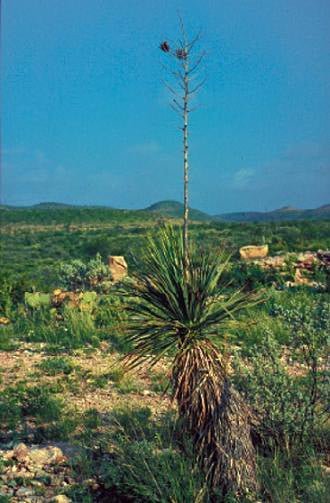
Yucca constricta, or “Buckley’s yucca,” belongs to the Asparagaceae family. This plant is native to the rocky limestone hills of central and eastern Texas, as well as in Coahuila, Mexico. It typically doesn’t have a visible stem above the ground, but sometimes it forms clusters and spreads through trailing stems.
23. Yucca linearifolia
Yucca linearifolia is a plant that belongs to the Asparagaceae family. It’s originally from the Chihuahuan Desert in the Mexican states of Coahuila and Nuevo Leon. This plant looks like a small tree and can grow up to 3.5 meters tall. It has slim leaves with tiny teeth on the edges and produces fleshy fruits.
24. Twistleaf yucca

Yucca rupicola is a member of the Asparagaceae family and goes by names like twistleaf yucca, twisted-leaf yucca, Texas yucca, or twisted-leaf Spanish-dagger. It was first described by George Heinrich Adolf Scheele in 1850. This plant is small, doesn’t have a visible stem above the ground, and is recognized for its uniquely twisted leaves.
Check out The Comprehensive Guide to Lemon Tree Growth Stages Click here...
Yucca Plant Care Guide
Yucca plants are known for being able to grow well in many different and tough situations. Here’s a detailed guide to taking care of your Yuccas so they stay healthy and happy:
Light
Yucca plants love sunlight, so they do well in indoor areas with lots of light and outdoor gardens that get plenty of sun. Make sure they get enough sunlight to help them grow strong and healthy.
Watering
Yucca plants come from dry, arid places and can handle drought really well. So, don’t water them too much, or their roots might start to rot. Let the soil dry out between waterings to keep the right amount of moisture.
Soil
For Yucca plants, it’s good to use a soil mix that’s three parts sand to one part peat. When you’re moving your Yucca to a bigger pot, pick soil that drains well so water doesn’t gather, because Yuccas don’t like being in really wet conditions.
Fertilizer
Yucca plants grow slowly, so you don’t need to fertilize them often. But giving them a balanced nitrogen fertilizer once or twice a year can make them healthier and help them grow better.
Pruning
To keep your Yucca plants looking lively, remember to take off old and dried leaves regularly. You can also give them a gentle dusting with a feather duster or something like it once a week to keep them clean.
Benefits of Yucca Plants
Yucca plants offer more than just their good looks:
- Air Purification: Yuccas are great at cleaning the air, making the air you breathe at home better.
- Medicinal Uses: The roots of Yucca have been used traditionally to help with things like managing blood sugar, reducing stress, and easing joint pain.
- Anti-Inflammatory: Yuccas might help lower inflammation in your body, which is good for your overall health.
- Crafts and DIY: Yucca leaves are handy for making things with your hands, like custom baskets.
- Attracting Hummingbirds: Red and Yellow Yuccas are known for bringing hummingbirds to your garden, adding color and life.
- Security: Yuccas with sharp leaves can make your home safer by keeping unwanted people away.
Are Yucca Plants Pet Safe?
Most Yucca plants are safe for pets because their leaves are sharp and their trunk is hard, making it tough for pets to chew on them. However, there are a few exceptions. The Spineless Yucca has softer leaves that might tempt your plant-eating pets. If you have pets, it’s a good idea to go for Yucca types with sharper leaves to keep your pets safe. If you think your pet has eaten something from the Yucca and shows signs like feeling dizzy, weak, or having big pupils, call your vet or a pet poisoning hotline right away.
Choose the Perfect Yucca Plant for You
With many different types of Yucca plants to pick from, each with its own special qualities and good looks, you can find a Yucca plant for your garden or home. Whether you choose a Spineless Yucca, the famous Joshua Tree, or another kind you like, Yuccas add a bit of nature’s beauty to your life. Take your time to look at your choices and let us know which Yucca plant you love and why.
Yucca Plants FAQ
Q: How do you care for a Yucca plant?
A: Taking care of a Yucca plant is easy. It needs soil that drains well, lots of sunlight, and you should water it only occasionally. Be careful not to give it too much water, as that can harm the roots.
Q: Can you grow Yucca plants outside?
A: Yes, Yucca plants are great for outdoor gardens, especially in sunny, dry places. Just make sure they get plenty of sunlight and don’t water them too much.
Q: How long can a Yucca plant live?
A: Yuccas can live a long time. If you keep them in pots, they can survive for over five years, and the tree kinds can live even longer, depending on how well you take care of them and the conditions they’re in.
Q: What are Yucca plants good for?
A: Yucca plants have many uses. They make your indoor and outdoor spaces look nice, and they can also help clean the air. Some people use their roots for medicine, and you can even use their leaves for crafts and do-it-yourself projects.


Pingback: Red and Green leaves Plants to Elevate Your Holiday Decor
Pingback: 20 Types of Yucca Plants (With Pictures) -
Pingback: Beautiful Trees That Start With ‘Z’ - Gardener's School